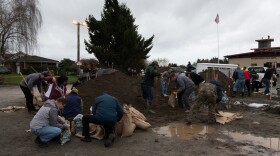A local watershed is the first in the Northwest to participate in a federal program that aims to connect people with their waterways.
As of today, the Green River-Duwamish watershed is a part of the Urban Waters Federal Partnership, which focuses on revitalizing urban waterways. Formed in 2011, the federal group aims to unify and direct the efforts of 13 federal agencies working to improve water quality.
The Green-Duwamish River Watershed stretches 93 miles from the industrial core of Seattle, east through the Cascade foothills and up into the wilderness of the Mt Baker-Snoqualmie National Forest. It serves as the city of Tacoma’s municipal water source and provides habitat for five species of salmon.
And it includes some of the Pacific Northwest’s most diverse human communities whose health has been impacted by their location near polluted parts of the Duwamish River Superfund site that empties from Elliott Bay into Puget Sound.
The designation as part of the Urban Waters Federal Partnership doesn’t come with any special funding, but the hope is that it will give an extra boost to work already underway like helping expand people’s access to the shoreline.
“So that somebody in Georgetown can actually walk down to the end of Eighth Avenue and not just have a bench to look at, but see habitat and be able to get out a little bit closer to the river,” said James Rasmussen, Director of the Duwamish River Cleanup Coalition.
Rasmussen hopes the partnership will make projects in the watershed more competitive for federal grant funding. The U.S. Forest Service is a lead agency for the partnership here. One idea, Rasmussen says, is that it could help the diverse and disadvantaged communities of the industrial areas get more tree cover.
“One of the things we know is that if you have trees in your neighborhood, you actually are healthier. Is there a program that we can work with the forest service to be able to get more mature trees to be planted in South Park and Georgetown?” he said.
And that might also help endangered salmon and steelhead trout in the watershed by providing more shade and cooler water in places where they like to spawn.
All involved say an important goal of the partnership is to break down the silos between the 13 agencies that have signed on, to get them all working more efficiently toward common restoration goals, whether for healthy salmon habitat or better human access to the open space that often surrounds it.







